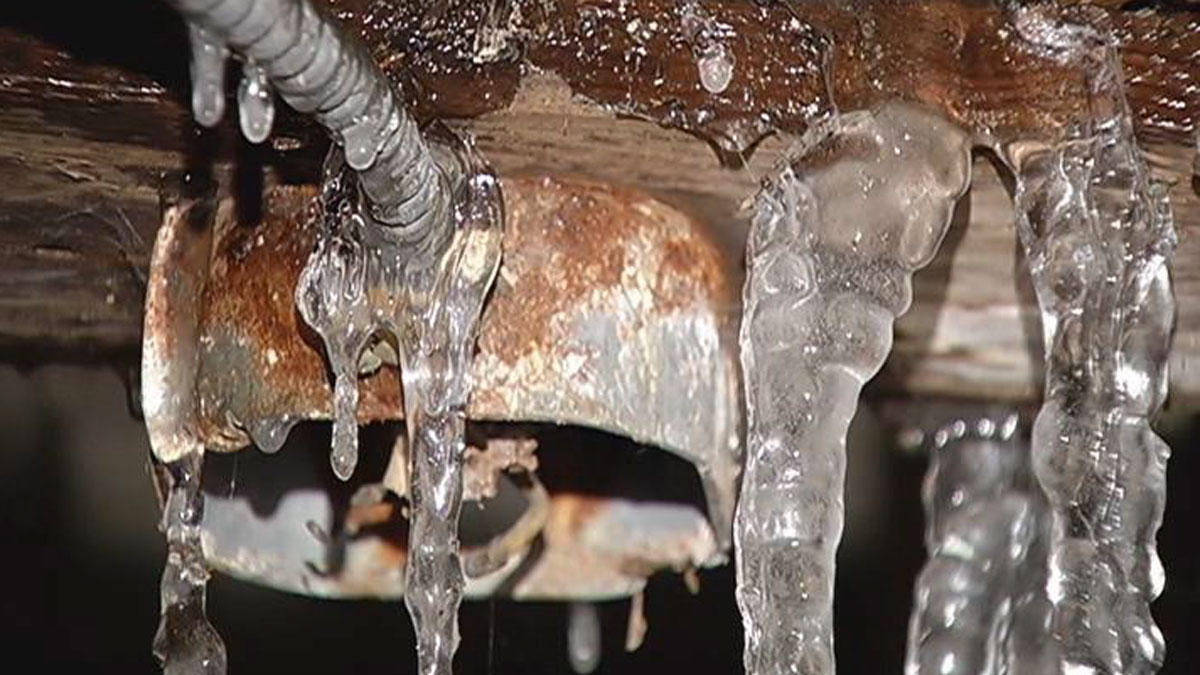Avoid Frozen Plumbing in Winter: Expert Advice
Avoid Frozen Plumbing in Winter: Expert Advice
Blog Article
Presented here on the next paragraphs you can get lots of exceptional ideas all about How to prepare your home plumbing for winter weather.

Winter can ruin your plumbing, especially by freezing pipelines. Below's just how to stop it from taking place and what to do if it does.
Intro
As temperature levels drop, the risk of icy pipes increases, possibly causing pricey repair services and water damage. Comprehending just how to avoid frozen pipes is vital for property owners in cool climates.
Recognizing Frozen Pipelines
What causes pipelines to ice up?
Pipes ice up when exposed to temperature levels below 32 ° F (0 ° C) for prolonged durations. As water inside the pipes ices up, it broadens, taxing the pipeline walls and possibly causing them to rupture.
Risks and problems
Frozen pipelines can result in water system disruptions, building damage, and expensive repairs. Burst pipes can flooding homes and trigger substantial structural damage.
Indicators of Frozen Pipes
Recognizing icy pipes early can avoid them from bursting.
Just how to determine frozen pipes
Seek reduced water circulation from faucets, uncommon smells or noises from pipelines, and noticeable frost on subjected pipelines.
Prevention Tips
Shielding vulnerable pipes
Cover pipes in insulation sleeves or utilize warmth tape to safeguard them from freezing temperatures. Concentrate on pipes in unheated or exterior areas of the home.
Home heating strategies
Keep interior rooms appropriately heated, specifically areas with pipes. Open up cabinet doors to enable cozy air to distribute around pipes under sinks.
Shielding Outdoor Pipes
Garden hoses and outside taps
Disconnect and drain yard tubes prior to wintertime. Set up frost-proof spigots or cover outdoor taps with shielded caps.
What to Do If Your Pipes Freeze
Immediate actions to take
If you suspect icy pipelines, keep taps open up to soothe stress as the ice melts. Use a hairdryer or towels taken in hot water to thaw pipelines gradually.
Long-Term Solutions
Architectural modifications
Take into consideration rerouting pipelines far from outside walls or unheated areas. Add added insulation to attic rooms, basements, and crawl spaces.
Updating insulation
Buy top notch insulation for pipelines, attics, and wall surfaces. Appropriate insulation aids keep constant temperature levels and lowers the danger of frozen pipelines.
Conclusion
Protecting against frozen pipes needs aggressive measures and fast reactions. By comprehending the causes, indicators, and preventive measures, homeowners can protect their plumbing throughout winter.
5 Ways to Prevent Frozen Pipes
Drain Outdoor Faucets and Disconnect Hoses
First, close the shut-off valve that controls the flow of water in the pipe to your outdoor faucet. Then, head outside to disconnect and drain your hose and open the outdoor faucet to allow the water to completely drain out of the line. Turn off the faucet when done. Finally, head back to the shut-off valve and drain the remaining water inside the pipe into a bucket or container. Additionally, if you have a home irrigation system, you should consider hiring an expert to clear the system of water each year.
Insulate Pipes
One of the best and most cost-effective methods for preventing frozen water pipes is to wrap your pipes with insulation. This is especially important for areas in your home that aren’t exposed to heat, such as an attic. We suggest using foam sleeves, which can typically be found at your local hardware store.
Keep Heat Running at 65
Your pipes are located inside your walls, and the temperature there is much colder than the rest of the house. To prevent your pipes from freezing, The Insurance Information Institute suggests that you keep your home heated to at least 65 degrees, even when traveling. You may want to invest in smart devices that can keep an eye on the temperature in your home while you’re away.
Leave Water Dripping
Moving water — even a small trickle — can prevent ice from forming inside your pipes. When freezing temps are imminent, start a drip of water from all faucets that serve exposed pipes. Leaving a few faucets running will also help relieve pressure inside the pipes and help prevent a rupture if the water inside freezes.
Open Cupboard Doors
Warm your kitchen and bathroom pipes by opening cupboards and vanities. You should also leave your interior doors ajar to help warm air circulate evenly throughout your home.

I ran across that entry about How to prepare your home plumbing for winter weather while doing a search on the search engines. You should pause to promote this write-up if you enjoyed reading it. Thank you so much for taking the time to read it.
Information Here Report this page